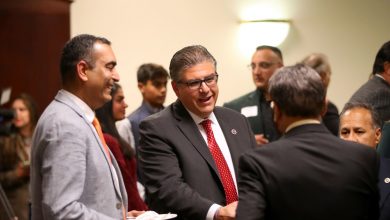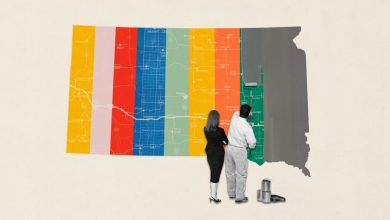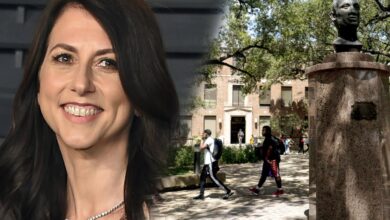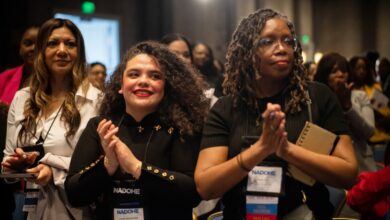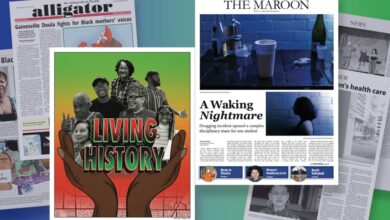Citing State Law, an Idaho College Censored an Art Exhibit That Mentioned Abortion
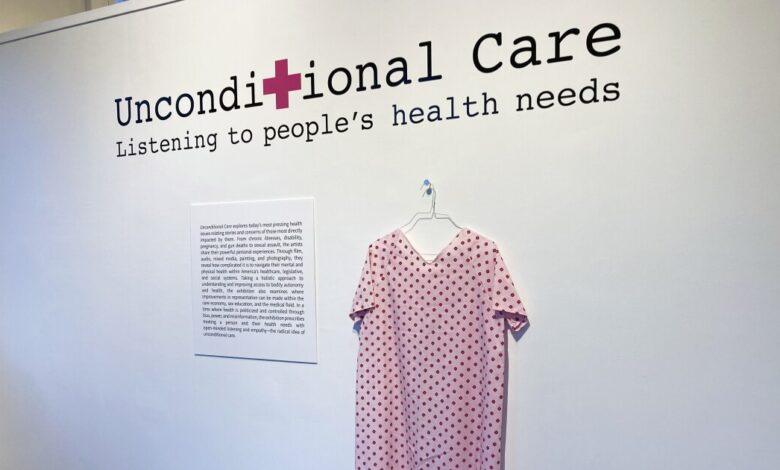
Lydia Nobles, a New York-based artist, thought everything was going smoothly with the installation of her artwork at Lewis-Clark State College’s Center for Arts and History, in Idaho.
Nobles’s work, a series of videos of women talking about their experiences with abortion and pregnancy, was going to be included in a group show, called “Unconditional Care,” that focused on health issues.
But on February 28, the artist got an email from the center’s director, Emily Johnsen, saying that Nobles’s work could not be included in the show. The decision was made, the email said, after consulting with lawyers and “based on current Idaho Law,” specifically a recent law that makes it illegal to use public funds to “promote” or “counsel in favor of” abortion.
By the time the show opened last Friday, the college had removed two other artists’ works and edited a wall label that mentioned abortion.
The episode confirms the fears of free-speech advocates who have taken note of Idaho’s particularly restrictive abortion ban. The law’s language is vague, leaving the state’s public colleges to interpret for themselves and their employees what it means to “promote” abortion in the context of scholarship, teaching, and art. Last year the University of Idaho told its staff and faculty members that they must remain “neutral” on the topic of abortion and reproductive health. Such forceful interpretations have not been limited to Idaho.
The American Civil Liberties Union and the National Coalition Against Censorship wrote a letter to Cynthia L. Pemberton, the college’s president, urging the institution to reconsider its decision to exclude Nobles’s work from the show and condemning its reading of the No Public Funds for Abortion Act, or the NPFAA.
“The College’s interpretation of the NPFAA — that it applies to works of art depicting the discussion of abortion — demonstrates the potential abuses of the Act,” the letter said. The decision, the groups said, threatens the First Amendment “by censoring Nobles’ important work and denying visitors of the Center the opportunity to view, consider, and discuss it.”
For her piece, Nobles interviewed 26 people about their pregnancies. Most of the participants had proceeded with abortions, though some had not. For the show at Lewis-Clark State College, she narrowed the work to four videos. She did not intend to advocate for or against abortion, she said, but to allow people to tell their stories.
“I was really interested in documenting people’s perspectives,” Nobles said. “Allowing them to frame their story how they wanted to frame it.”
Nobles said she asked the center’s director what the college had objected to, hoping there might be a way to compromise and still include some of her work. But, she said, she never heard back. None of her videos were in the show and her name was not included on the center’s website or the exhibit’s news release.
The college also removed one of the works by Katrina Majkut, an artist who curated the exhibition. The day before the show opened last Friday, Majkut walked through the exhibit with college administrators. She said they were concerned about a piece of hers that depicts abortion pills. She was told by administrators, whom she declined to name, that she could not include that piece in the show. Majkut said she was also asked to remove some language from a wall label that mentioned abortion in the context of IVF treatments.
A Lewis-Clark State College spokesperson said in a statement to The Chronicle that college officials became aware of concerns about the show on the night of February 26.
“Within 24 hours the college engaged legal counsel to try to determine if any of the concerns might be in conflict with Idaho Code Section 18-8705,” the statement said. “On Feb. 28, within hours of receiving legal advice that some of the proposed exhibits could not be included in the exhibition, the college began notifying the third-party exhibit curator and artists involved.”
Majkut said she did not intend to create the show or a piece of artwork to protest the Idaho law or advocate a position. Both were meant to prompt discussion and learning, she said.
“I, in my own work and in this exhibit, really aimed to create an exhibit that bridged the gap,” she said, “where anyone, regardless of their political views, could learn and discuss a topic with respect and empathy.”
To her, the college acted out of fear.
”It comes at the cost of free speech and expression and at the cost of academic learning,” she said.
Michelle Hartney, the third artist whose work was excluded, had included a piece that was a recreation of a 1920s letter that a woman wrote to Margaret Sanger, the nurse and birth-control activist. In the letter, the woman wrote that she had had two abortions, though much of the letter was about the cost and physical toll of her medical care.
“I was pretty surprised that my piece was pulled,” Hartney said. “I view it as a historical document. It’s really just a copy of that letter.”
Source link


